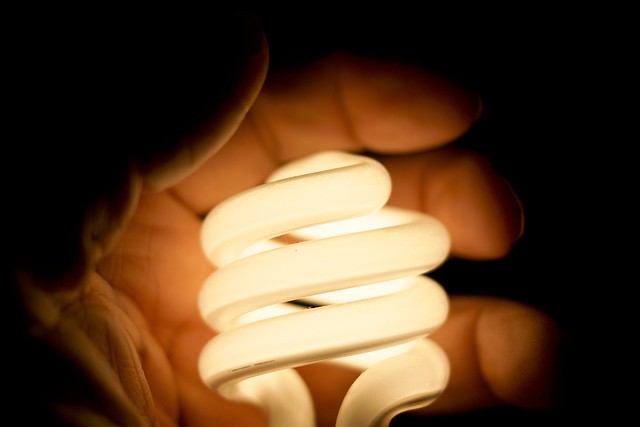 Most of the time when I casually talk to people about energy consumption, they think the transportation sector is the largest consumer. However, according to the U.S. Energy Information Administration (EIA), 40% of the total energy consumed in the United States in 2013, was consumed by residential and commercial buildings, and is equivalent to 40,000,000,000,000,000 BTUs. The same amount of energy is contained in over 320 Million gallons of gasoline.
Most of the time when I casually talk to people about energy consumption, they think the transportation sector is the largest consumer. However, according to the U.S. Energy Information Administration (EIA), 40% of the total energy consumed in the United States in 2013, was consumed by residential and commercial buildings, and is equivalent to 40,000,000,000,000,000 BTUs. The same amount of energy is contained in over 320 Million gallons of gasoline.If my car could last long enough I could drive 16.86 Million miles with all that gasoline. With our buildings consuming so much energy, most of which is coming from fossil fuels, what are we doing to curb this consumption?
Strategies for improving the energy efficiency of buildings include mandatory and voluntary programs. In some parts of the country there are time-of-sale, energy efficiency mandates in real estate transactions. Generally, these programs save between 3% and 6% on electricity, and between 5% and 15% on natural gas. In areas where time of sale energy efficiency mandates are in place, participation rates are around 89%. However, in areas where time-of-sale energy efficiency programs are voluntary, participation rates are less than 1%.
Green buildings, such as certified Energy STAR or LEED buildings, can see total energy savings between 20% and 33%. Across the country voluntary green building programs for new constructions have participation rates from less than 1% up to almost 8%.
In San Francisco, all newly constructed commercial buildings over 20,000 square feet, must be LEED certified. However, only about 0.2% of commercial building space is built new every year. Energy information display meters, which allow for real time viewing of energy consumption, can save between 6% and 12% of household electricity consumption. However, voluntary energy display meter programs have participation rates around 4% and I’m not currently aware of any mandatory energy display meter programs.
While these energy efficiency related programs have the potential to save a significant amount of energy, the majority of households and commercial businesses are not engaging in this programs.
 Lighting, which composes about 11% of a building’s total energy consumption, is one of the best energy efficient investments that people can make. Today there are federal regulations regarding lighting efficiency and a multitude of voluntary lighting efficiency programs. President Bush signed the Energy Independence and Security Act of 2007 (EISA) in to law seven years ago. This mandate was intended to phase out old inefficient incandescent bulbs and bring lights that are 25% more efficient to the market at reasonable costs to consumers. However, in 2012 Congress passed an amendment to the Energy and Water Appropriations Act which denies funding for the Department of Energy to enforce the 2007 EISA. Thus, there is a federal mandate for energy efficient lighting, but there is no one enforcing the mandate.
Lighting, which composes about 11% of a building’s total energy consumption, is one of the best energy efficient investments that people can make. Today there are federal regulations regarding lighting efficiency and a multitude of voluntary lighting efficiency programs. President Bush signed the Energy Independence and Security Act of 2007 (EISA) in to law seven years ago. This mandate was intended to phase out old inefficient incandescent bulbs and bring lights that are 25% more efficient to the market at reasonable costs to consumers. However, in 2012 Congress passed an amendment to the Energy and Water Appropriations Act which denies funding for the Department of Energy to enforce the 2007 EISA. Thus, there is a federal mandate for energy efficient lighting, but there is no one enforcing the mandate.In Seattle, a voluntary mail-in rebate for free compact fluorescent (CFL) lights, resulted in a 50% participation rate. In Denver, a door-to-door campaign, which gave two free CFLs to every household, resulted in a participation rate of about 10%. Other voluntary energy efficient lighting programs include demand side management offered by utility companies. While these voluntary lighting programs can have good results, lighting efficiency alone, is not enough to reduce the energy consumption of our buildings.
Energy audits, can proved building owners and occupants with a comprehensive list of energy efficiency upgrades to improve the buildings overall efficiency. For low-income residents there is the Weatherization Assistance Program, which provides households with a free energy audit and free energy efficiency upgrades. Unfortunately, the demand for weatherization services exceeds the amount that can be covered by current funding. Only about 0.4% of the total housing stock receives free weatherization services.
In door-to-door campaigns in Denver that offered free energy audits to homeowner had participation rates around 10%; however only about 4% of those who received free energy audits followed through with installing energy efficiency upgrades. Over the last few years 4CORE has been providing homeowners with energy audits for a modest fee ($450-$650).
4CORE has performed energy audits on less than 1% of the homes in La Plata County that do not qualify for weatherization services. Has your home been assessed yet?
Through hard work and collaboration 4CORE has brought multiple incentives to the community for energy audits, including discounts from the City of Durango, ATMOS Energy, and Source Gas. Some homes in Durango could qualify for $250 in discounts for an energy audit performed by 4CORE. These programs are voluntary, and as an a-political nonprofit, 4CORE will not advocate for mandated energy audit programs. Rather, 4CORE will serve the community as a hub for energy efficiency information and inspire the community to invest further in energy efficiency on a voluntary basis.
Much of the information in this blog cam from “Quantifying Carbon Mitigation Wedges in U.S. Cities: Near-Term Strategy Analysis and Critical Review” by Ramaswami et.al in Environmental Science and Technology, April 3, 2012.
For more information on the EISA legislation read the “How Many Politicians Does it Take to Change a Light Bulb?” blog from the Alliance to Save Energy.
About the Author
Sarah Rank